Artificial lagoons are quickly becoming a popular amenity in hospitality and real estate. Well-executed lagoon design offers a unique blend of luxury, visual appeal, and economic benefits that traditional pools simply cannot match.
Artificial lagoons, also known as man-made lagoons, are large bodies of water designed for recreational purposes. Unlike traditional swimming pools, artificial lagoons incorporate naturalistic features, like sandy beaches, landscaped surroundings, and organic shapes. These lagoons replicate the natural beauty of tropical water settings alongside advanced engineering systems to ensure hygiene, great efficiency, and reduced environmental impact.
Here, we’ll explore the essential characteristics of good lagoon design and their key construction requirements.
Dive deeper with the eBook
Elevating lagoon design
Lagoons have rapidly evolved from novel amenities to sought-after features in hospitality and real estate developments. It’s essential to go beyond the basics and explore how lagoon design can be further enhanced to maximize aesthetic appeal, functionality, and sustainability.
While lagoons inherently mimic the beauty of natural aquatic environments, innovative design strategies can further elevate their visual impact. Consider integrating dynamic elements like waterfalls, fountains, or sculpted rock formations to create focal points and add visual interest. Additionally, explore the use of underwater lighting to transform the lagoon into a mesmerizing spectacle at night.
The functionality of a lagoon can be significantly enhanced by incorporating different zones for activities. From resorts and residential developments to urban recreational spaces, lagoons are multifunctional amenities that offer guests and residents opportunities to swim, paddleboard, kayak, and relax in clear waters. Also, lagoons are usually surrounded by shops, restaurants, bars, promenade areas, sunbathing zones, and even water shows on the lagoon itself.
Therefore, to be perfectly integrated into the environment, provide crystalline water, and reduce maintenance costs, lagoon design requires careful consideration of the project’s ambitions and the associated technical requirements. Let’s look closer.
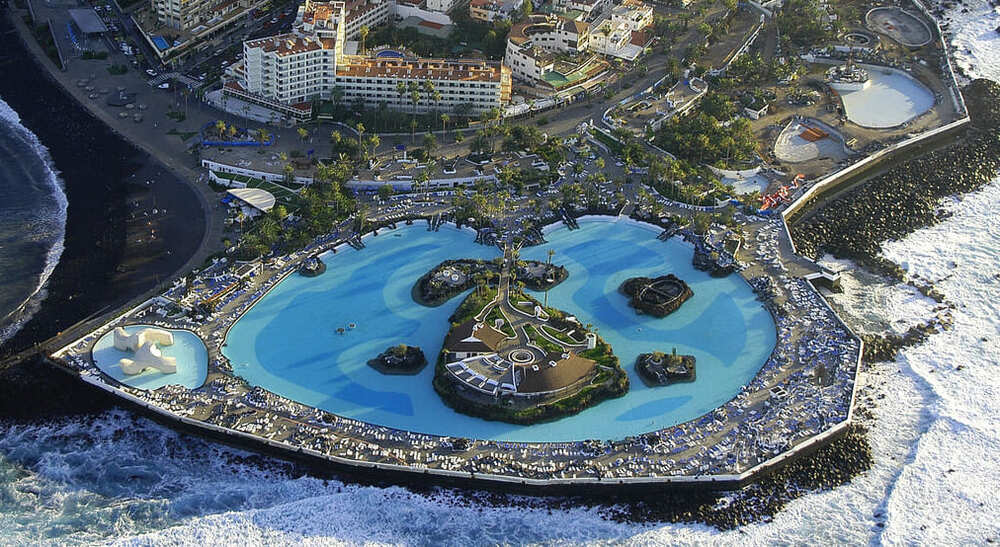
The key lagoon design principals
A well-designed lagoon is more than just a body of water; it’s an immersive experience that blends aesthetics, functionality, and efficiency. Achieving this requires careful consideration of several key factors. From ensuring pristine water quality to optimizing operational efficiency, each design element plays a crucial role in the lagoon’s appeal.
1. Crystal-clear water
The hallmark of any lagoon is its clear, turquoise water. This clarity is achieved through advanced water treatment systems capable of filtrating and disinfecting large quantities of water. To do this, the equipment must be sized properly and installed strategically. Recirculation systems are also essential to avoid stagnation areas. The main goal is to use as few chemicals, water, and energy as possible while ensuring it meets the highest safety and health standards.
2. Efficient operations and maintenance
Efficient operation and maintenance are crucial for long-term lagoon sustainability. Minimizing the footprint of mechanical installations through strategies like decentralized technical rooms and optimized piping layouts allows for more efficient land use and reduces energy consumption.
Streamlined designs that prioritize ease of installation and management contribute to lower construction and operational costs. Furthermore, incorporating high-efficiency pumps and filtration systems conserves resources and minimizes the lagoon’s environmental impact, aligning with the growing demand for sustainable amenities.
3. Aesthetic integration with surroundings
Lagoon design emphasizes harmony with its environment. Whether the lagoon is part of a resort, residential community, or urban area, its design is tailored to enhance the property’s visual appeal. Natural landscaping, artificial beaches, and gentle slopes help create an inviting and organic feel that matches the surrounding architecture.
4. Versatile and safe recreational spaces
Lagoon designs go beyond visual appeal to offer multifunctional spaces, providing exceptional design and versatility for the user experience. Whether freshwater or saltwater, their beach zones create ideal spaces for sports and relaxation, mimicking a natural oasis. Lagoons offer families a safe, peaceful environment free from hazards like strong currents, sharks, or jellyfish. Visitors can enjoy activities such as swimming, kayaking, and paddle surfing or simply relax by the promenade and restaurants while enjoying stunning views.
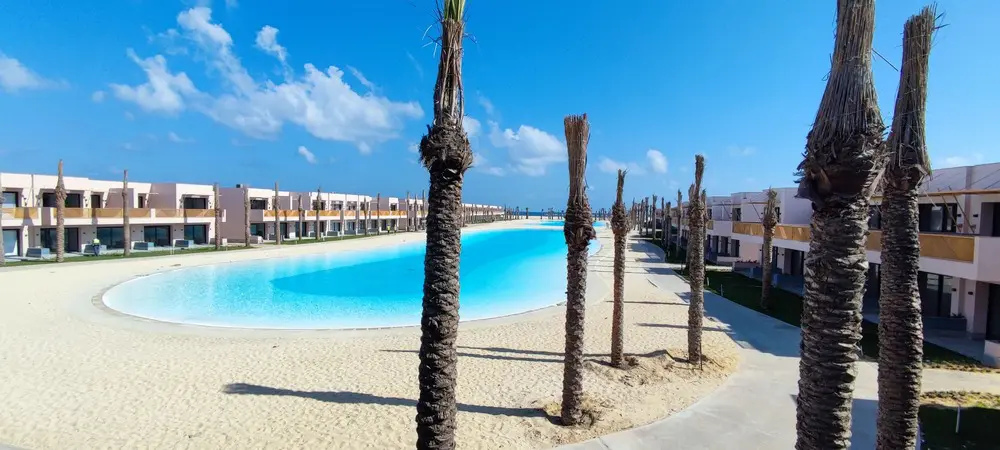
The technical requirements
Meeting each of these ambitions involves meticulous planning and attention to detail across multiple engineering and design elements. Every component, from the shoreline layout to the positioning of technical systems, is vital to ensuring optimal functionality, visual appeal, and water quality over time.
1. Beach zones and perimeter walls
Fluidra’s lagoon designs create an attractive shoreline, alternating beach zones with “pool-style” perimeter walls. This approach allows for adaptable designs that suit diverse landscapes and architectural styles.
The beach zones mimic natural shorelines with a gentle slope into the water, promoting safety and offering a seamless, inviting transition from land to water—evoking the feel of a tropical paradise. These areas ensure watertightness with a dual-layer system: a concrete base topped with a liner for added protection.
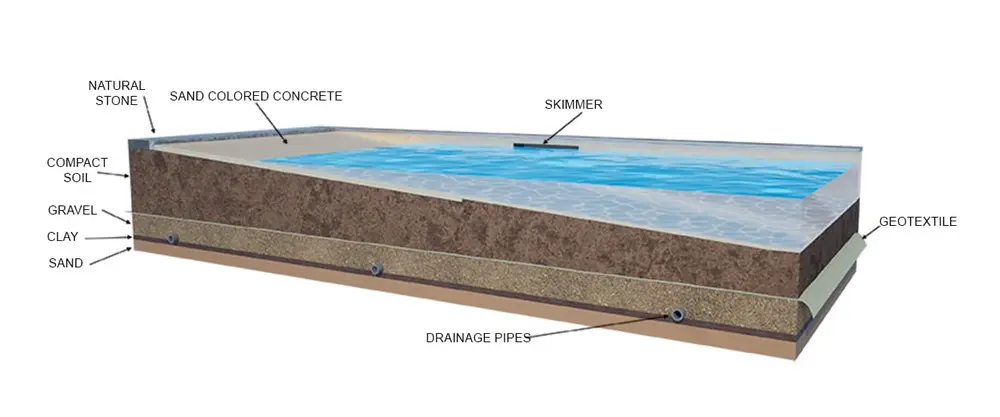
Perimeter walls, often placed in deeper sections, provide structural support and help define areas for various activities, such as swimming, wading, or accommodating nearby restaurants and bars. These walls consist of a concrete structure, optionally finished with stone coping for added durability and style. Typically, the lagoons have a maximum depth of 1.5 to 2 meters and feature a waterproof PVC liner at the base.
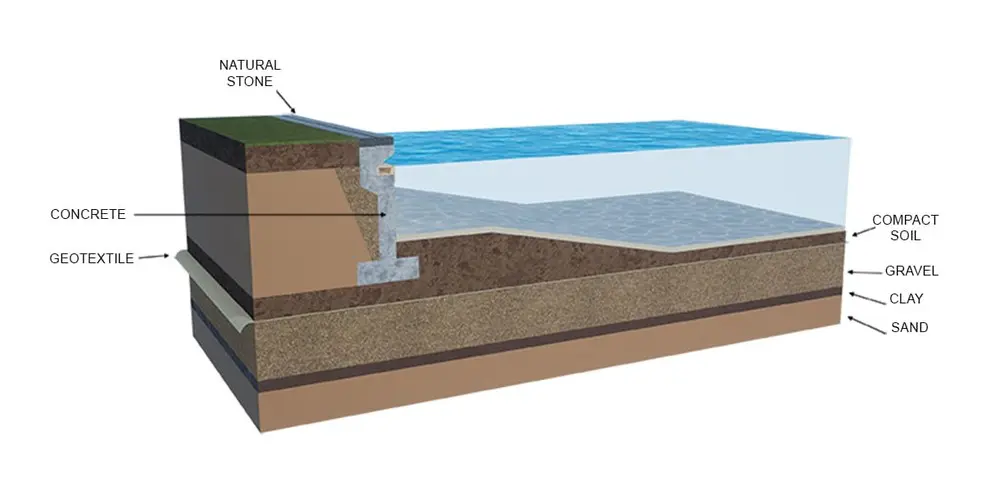
2. Optimized piping and water return systems
A well-designed piping system enhances hydraulic efficiency and lowers energy use. Strategically placed wall and bottom nozzles ensure consistent water circulation throughout the lagoon, preventing stagnation and maintaining high water quality. This seamless flow supports the effectiveness of the lagoon’s filtration and disinfection systems.
By streamlining the piping layout, Fluidra’s solution reduces pressure losses, a crucial factor in large-scale projects. This design approach creates a more energy-efficient system, cutting operational costs while maintaining clear water.
3. Strategically located technical rooms
Fluidra’s innovative approach saves space for mechanical installations using smaller, decentralized technical rooms and optimized piping systems. Placing these rooms closer to specific sections of the lagoon minimizes the length of piping needed, reducing friction losses and optimizing energy efficiency.
These technical rooms are seamlessly integrated, staying out of sight to preserve the lagoon’s aesthetic while remaining easily accessible for maintenance and operations. This setup also allows for easy installation and management, with no ownership fees and low construction and operational costs, providing peace of mind for operators.
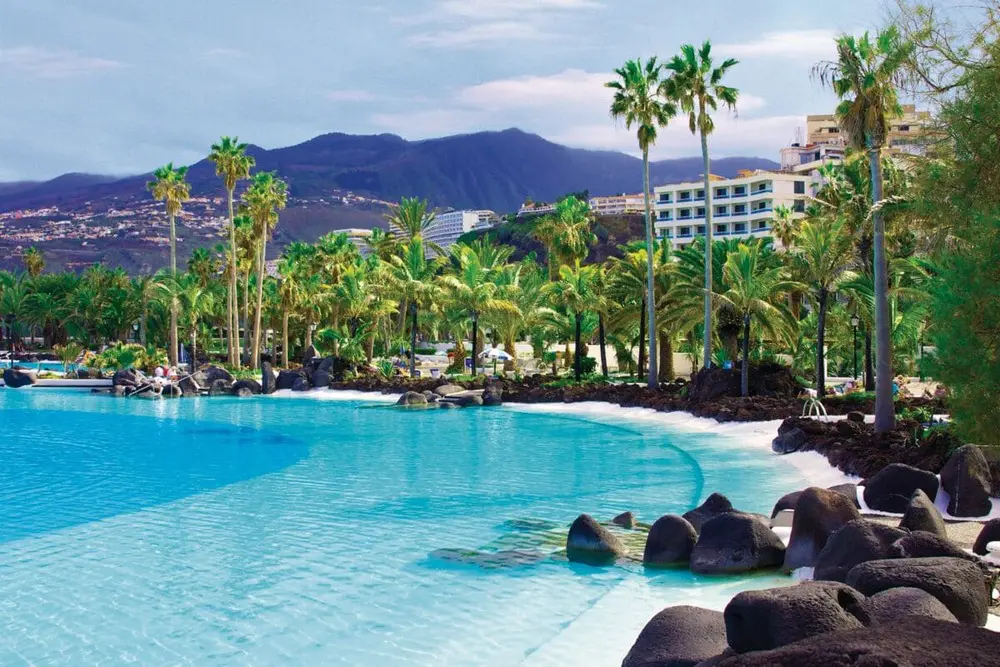
4. Water recirculation and filtration systems
Aspiration and impulsion systems are key to ensuring top-tier water quality. Surface skimmers and bottom drains work together to remove floating debris and settled sediments. About 70-80% of the water is drawn from the surface via skimmers, capturing floating materials like leaves and insects. Meanwhile, 20-30% is removed from the lagoon floor through bottom drains to prevent sediment buildup and support full water circulation.
The collected water is sent to filtration systems, which may include sand filters or regenerative media filters like perlite. Sand filters use a combination of water and air during backwashing, reducing water waste compared to traditional methods. Regenerative filters, on the other hand, only require about 2 liters of water per backwash cycle. Flocculation systems can also be added to further enhance filtration efficiency.
The treated water is returned to the lagoon through nozzles placed along the walls and base, ensuring comprehensive circulation and eliminating stagnant areas. The entire process, from aspiration to disinfection, typically takes around 6 hours, although this may vary depending on the lagoon’s size and design.
Additionally, lagoons are equipped with an efficient water replenishment system to counteract evaporation and maintain optimal water levels. In saltwater lagoons, this process involves adjusting salinity levels to ensure balance.
5. Disinfection water treatment in freshwater and saltwater lagoons
Disinfection is vital to keep the water clean and free from harmful microorganisms and follow safety regulations.
Freshwater lagoons: Disinfection is typically achieved using chlorination systems similar to those found in swimming pools. To enhance safety and water clarity, UV disinfection systems are often added as a secondary treatment layer, providing an additional level of protection.
Saltwater lagoons: These lagoons utilize electrolysis to naturally produce chlorine from the water’s salt. This process eliminates the need for chemical storage and handling. UV systems are also commonly used to improve disinfection and reduce chemical reliance.
In both types of lagoons, automated control systems continuously monitor and adjust water conditions, ensuring consistent quality and adherence to local health standards.
Set your property apart
Innovations in lagoon design are redefining the standards for luxury in hospitality and real estate. They offer stunning naturalistic aesthetics, unique recreational opportunities, and efficient solutions that set a hotel or residential development apart from the competition.
To ensure a successful project, every aspect of lagoon construction must be carefully considered, from site planning to water management and scalability. Advanced technology, such as Fluidra’s water treatment systems, enables developers to achieve crystal-clear water while minimizing resource consumption.
An artificial lagoon is a game-changer for any developer or hospitality professional seeking to differentiate their property. Not only do lagoons enhance property appeal, but they also offer practical, sustainable solutions that meet the expectations of today’s holidaymakers and property owners, all while driving value for developers and operators.
